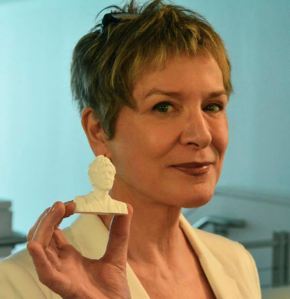I recently attended the second annual Twenty-first Century Children's Nonfiction Conference in New Paltz, NY. [ Full disclosure: I attended as a faculty member and my company, iNK Think Tank was a sponsor (for the second year in a row). ] About half of the attendees were people who wanted to write about the real world for children and were looking to break into the field by meeting editors and packagers who write for the education market. The very existence of the conference and the excited buzz it generated is due to the renewed focus on reading nonfiction in schools due to the Common Core State Standards. The CCSS mandate that 50 percent of all reading in elementary school and 70 percent in high school be nonfiction. After all, it's what most reading is in an adult's daily life.
Why read nonfiction? The utilitarian reasons are the ones cited most. We read to understand the fine print of contracts, how to operate the new-fangled gadget we just overpaid for, to make sure we don't get the side effects of a new medication. We read to learn disciplines like engineering, or culinary arts, or chemistry. We read to keep up with the times, to find our way in unfamiliar locations, to discover the dos and don'ts of foreign lands. The underlying assumption is that we read nonfiction because we have to; we read fiction because we want to. It is this assumption that has kept children's nonfiction in the background of children's literature. Who would want to read a book about (fill in the blank with a subject that seems dry) if they didn't have to read it for an assignment?
Why not read nonfiction for pleasure? Some of us are working on it. At the conference I met Lillian Holtzclaw Stern, who is doing for children what Arianna Huffington did for adults. She has created a daily, online newspaper for kids in grades 2-6 called News-O-Matic. Her mission is to get children into the habit of reading current events on a daily basis. If the Huffington Post is to have readers in the future, Lillian is creating them. As a mother of three, she pays close attention to how the world is presented by having child psychologist Phyllis Ohr on staff. The newspaper does not take advertising. And the editor-in-chief, Russell Kahn, knows that children deserve only the best when it comes to the quality of the writing.
The common denominator of all people who write nonfiction for children is that we are curious about the real world. We are all, without exception lifelong learners. So it was totally in context that a conference feature included a demonstration of the 3-D desktop printer. SUNY New Paltz, the conference venue, happens to be the location of the brand new Hudson Valley Advanced Manufacturing Center featuring 3-D printing, the first in the nation. They created a miniature 3-D bust of fellow faculty member, author/illustrator Roxie Munro.
Here's a picture of Roxie and her Mini-Me. Roxie can have larger-ones made, if she wants bookends, but they'll take longer than the hour and a half that it took to print this one. Hmmmm...if 3D printing is the future, maybe someone needs to write a kids' book on it.
So, I'm going to let you in on what I hope is a not-so-well-kept secret. If you want to learn something new, get a book on the subject at your local library's children's room. You just might learn something new and be entertained in the bargain.


